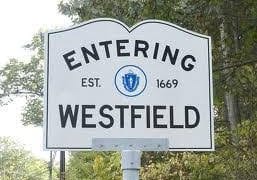WESTFIELD – The Municipal Light Board last night approved the municipal utility’s annual payment in lieu of taxes (PILOT) to the city based upon an agreed formula, but also decided to revisit that formula later this year.
The PILOT is calculated on 70 percent of the department’s physical plant value, as reported annually to the state Department of Public Utilities, assessed at the city’s commercial tax rate, which this year is $31.09 per $1,000 of assessed value. The formula allows the municipal utility to deduct $60,000 for maintaining the city’s traffic lights.
That formula results in a gross payment of $570,919 this year.
The net payment for the 2014 fiscal year will be $405,919 because of funds “loaned” to the city for traffic light improvements and replacing the lights at the Park Square Green with energy-efficient LED fixtures, and installing a control (dimmer) system to adjust those fixtures.
The WG&E advanced $100,000 for the traffic light improvements associated with the recently completed Great River Bridge and the Main Street/Broad Street projects. The utility spread repayment of that funding over the four fiscal years, 2012 to 2015, reducing the annual pilot by $25,000.
The MLB voted at its July 11, 2012 meeting to advance $80,000 to fund the Park Square LED light fixture upgrade, with the agreement that the department would deduct that money from the following year’s (Fiscal Year 2014) PILOT. The city decided to revamp the lights, installed as part of the Main Street/Broad Street improvement project, after testing the system that was blindingly bright and was installed without a system to control the brightness.
The total of the PILOT reductions is $165,000 for the 2014 fiscal year, cutting the formula-based payment of $570,919 down to $405,919. The department will make monthly payments of $33,827 beginning on July 1, 2013.
MLB Chairman Tom Flaherty said the department has a commitment to the city to make the payment because Mayor Daniel M. Knapik is currently developing the FY 2014 budget and needs to know the PILOT number as part of that budget process.
“I think that the formula needs to be revisited this year after we make the payment,” Flaherty said. “I’d like to entertain a vote for this ($405,919) amount, then have a discussion on future payments, maybe a fixed number or an adjustment to the formula.”
Initially, the formula used 80 percent of the department physical plant value and a commercial tax rate that was lower than the current rate, resulting in payments of slightly over $300,000 a year.
The value of the physical plant has substantially increased because of the improvements made to the department’s infrastructure as part of the major road improvement projects, as well as investments in extending the department’s gas service throughout the city after competition of the Southwick lateral.
“Every year we’re seeing a significant (PILOT) increase,” Flaherty said. “The department has made improvements that have added to the plant value, as well as increases in the tax rate.”
Commissioner Robert Sacco suggested that the formula be adjusted by using the value of the City Assessor’s property evaluation instead of the book value reported to the DPU. Assessed values tend to be lower than book values.
General Manager Dan Howard said that the department has made “substantial investment into the infrastructure over the last five or six years. I think that investment has peaked and will flatten out.
“In the future the PILOT will be more influenced by the tax rate than infrastructure improvements to the plant,” Howard said.
The PILOT has increased about $240,000 since the formula was incorporated between the city and department, with $180,000 of that increase due to physical plant improvements and $60,000 due to increases in the commercial tax rate.







